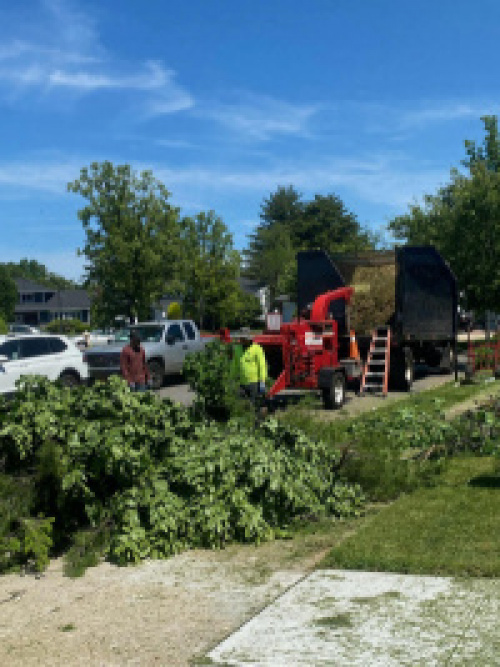Tree care Tips
- June 5, 2022
- Landscapers

Tree Care Tips That You Need to Know
There is some essential Tree Care Tips that you need to keep in mind. For example, you need to plant trees in a sheltered spot to prevent them from being damaged by wind and other factors. If necessary, you can secure the tree’s canopy with stakes or wrap. Also, you need to take note of the trees’ proximity to roads because road salt can harm trees that are not tolerant of salt. In general, these are just a few of the many Tree Care Tips that you need to know.
Pruning
Here are some basic pruning tips to ensure your tree grows in the direction you want it to grow. One of the most common mistakes when pruning is making one cut at a time. The branch must have multiple passes before it reaches the collar of the tree. Cutting too deep will tear the bark. Also, cut at an angle. Once you have removed the branch, leave the collar intact. This will help the tree heal quicker. And remember: when pruning a tree, you should never cut more than one-third of its diameter.
There are many reasons to prune your tree, and if you’re not sure how to begin, consult a professional. Not only will pruning prevent pests and diseases from damaging the healthy parts of the tree, but it will also help your tree look better. Pruning is also an important aspect of safety, so be sure to be aware of your surroundings. Dead or dying branches can cause hazards for pedestrians and drivers. Also, don’t forget to prune away limbs that hang too low over utility lines.
Another great pruning
tip is to avoid removing more than one-fourth of the living crown in a single season. Instead, spread pruning tasks over several years. While it’s possible to raise the crown in a single year, it’s best to avoid doing so during the winter, when the tree’s growth is slowest. If you’re worried about destroying the tree’s stem, contact an arborist instead. They can help you determine whether you need to prune the tree during the colder months or not.
When pruning a landscape tree, the goal is to maintain the tree’s natural shape, ensuring that it doesn’t drastically change its shape. In addition to pruning dead branches, you should also prune inward-growing branches that threaten telephone lines, rub roofs, or overhang houses. The key is to prune in such a way that it doesn’t compromise the tree’s protection system and opens the door for potential fungus and insect infestation.
Fertilizing
There are two kinds of fertilizers: synthetic and organic. Synthetic fertilizers contain inorganic chemicals while organic fertilizers are derived from organic material. Organic fertilizers are better for the soil, but synthetic fertilizers don’t benefit the tree in the long run. If trees don’t receive the right nutrients, they will stunt their growth and conserve their energy. So, how do you fertilize trees? Listed below are some ideas:
The amount of fertilizer needed to nourish a tree depends on its size, age, and type of soil. Deciduous trees need a lot of nitrogen, while evergreens need phosphorus and potassium. Apply fertilizer evenly around the trunk of a tree and extend at least one-half of the diameter of its branches. Avoid using fertilizers that contain pesticides. Rather, select the most suitable product for your needs.
Before using any fertilizer
first check the pH level of your soil. If the soil is acidic, it may require specific nutrients. An arborist can evaluate the soil’s pH levels and suggest the best fertilizers for your tree. Arborists at united tree service Tree Care have the expertise and knowledge to recommend the best fertilizers for your trees. In addition, they prioritize slow-release fertilizers. For more information, call us at 516-9032188
Generally, fertilization can be performed by homeowners or by professionals. Always follow fertilizer instructions and apply mulch prior to applying the fertilizer. You can fertilize trees in the fall and early spring. To maintain the health of your trees, fertilization should be applied twice a year: once in late spring and once in the spring. A little fertilizer will do your tree the world of good! Just remember to follow the instructions on the fertilizer and do not use too much!
Watering
During the summer months, you may find yourself without water for your trees. Here are some watering tree care tips to avoid unnecessary expenses. First of all, you should have a bucket of water at the base of the tree. Fill it to the top, then let it drain. Repeat this process twice or three times. Make sure that you water your tree thoroughly and evenly. To make it easier for you to water the tree, use a hand cultivator to loosen the soil around the tree.
In addition to these watering tips, you should also monitor the roots of your new trees. Newly planted trees need to be watered a minimum of three times per week to avoid drying out the root ball. However, once they have been established, they need a much less frequent watering schedule. The best way to maintain the health of your newly planted trees is to check their growth every six to eight weeks and make adjustments as needed. more tree care tips
Aim to water your trees
a minimum of five gallons every three to four days. But if your soil is dry or extremely moist, you should consider adjusting the watering schedule. If your trees have wilted leaves, they need more water than usual. To know when your trees need water, you can check the soil moisture several inches below the root ball. You can also water them once or twice a week to mimic natural rainfall.
If you live in a cold climate, you should still water your trees regularly. Even in a dry spell, trees need moisture to grow. This is true whether or not they have snow or not. However, they do not have much water when the temperatures fall below forty degrees Fahrenheit. Besides, the soil temperature in your tree’s vicinity should be consistently moist. To avoid the risk of ice and frost cracks, you should wrap your tree in tree wrap. for more tree care tips
Pruning during dormancy
Winter pruning is an effective method for controlling a tree’s size and directing its growth. It also helps to control fast-growing shoots and water sprouts. Without leaves, it’s easier to see the branch structure and remove problem branches. And because winter temperatures don’t stimulate new leaf growth, fresh cuts heal faster. This also makes them less likely to attract disease-carrying insects. This means that winter pruning is a wise choice for people who want to ensure their trees’ health and beauty all year long.
Dormant pruning is a great way to reduce overgrown shrubs and trees and force new growth. While the process can take two to three years, it is still more affordable than re-landscaping in the spring. Some shrubs and ornamental trees respond well to dormant pruning, while others tolerate it. Here are some of the benefits of dormant pruning. It will reduce the size and shape of the tree and encourage healthy internal growth.
The first benefit of pruning trees during dormancy is that there are fewer diseases and insects around. Insects and pathogens are less active during the winter, and pruning cuts during dormancy gives them time to heal. It also helps to fertilize the trees, which is beneficial to the roots. Finally, it’s important not to top or prune trees during dormancy because topping can lead to fungus infestation.
Another reason why pruning is important during dormancy is that trees have less stress and are able to endure a lower temperature. Without the ability to migrate south to warmer climates, they enter a dormant stage. During this time, trees store water in the leaves. These waxy leaves are also great for storing water. That means that 90% of pruning can be done during this time.
Avoiding driving over roots
Many locations have signs prohibiting vehicles from parking next to mature trees, but it is still important to avoid driving over roots when caring for trees. This can damage trees’ delicate root systems and lead to compaction. Heavy machinery and excessive foot traffic can also cause soil compaction. Those with a green thumb will be able to spot signs that ask drivers to avoid parking near trees. They also can provide useful advice on protecting roots.
The health of trees is directly related to the environment in which they are grown. In addition to driving over roots, other practices that damage root systems include indiscriminate cutting or placing black plastic over them. Ideally, trees should be checked by a certified arborist to ensure they are healthy. If you don’t have a professional arborist, the TCIA offers a handy hiring tool to find a tree professional in your area.
To avoid damaging
trees, keep in mind that roots are not visible, but they are very strong and can grow into the pavement or sidewalk. Roots need plenty of room to grow, and they need to be able to move freely. Avoid driving under or over tree roots, and don’t place heavy materials near trees. If you plan to install a fence or another type of landscape around your tree, don’t route traffic over them – this can cause damage to the tree.
Whether you are trimming or pruning, consider the root-protection measures you will need to take when working with your trees. Try to protect as much of the root zone as you can, but keep in mind that the tree will be more likely to survive if 60 to 70 percent of its root zone is unharmed. Also, don’t work within the tree’s drip line. The drip line is the zone between the trunk and the farthest branches.
How to Care For a Tree Inexpensive in New York
Investing in a tree for your home or business can be a great investment. However, it is important that you understand how to care for your tree, especially if you live in New York. If you have a tree in your home or business, you’ll want to make sure that you take the time to water it regularly and prune it as needed. This will help to maintain its health and longevity.
Pruning
Keeping your tree healthy and beautiful requires proper pruning. It can also prevent insect damage. In some areas, pruning may be necessary prior to hurricane seasons.
The best time to prune a tree is late in the dormant season. This will allow the tree to heal quickly. It also gives the tree company a chance to see all branches. During this time, removing dead and diseased branches will help the tree recover faster.
In the spring, after leaves have formed, the branch collar tissues are built up. This creates a protective boundary around the wound, preventing insect and pathogen invasions.
If the tree has a branch collar that is too prominent, it can be difficult to prune properly. It can be tempting to cut through the collar, but this can leave an ugly wound.
To make a good pruning cut, you should cut back to a twig. This will promote healthy new growth.
Watering
Whether you live in the city or the country, watering a tree is important for its health and beauty. Often times, people overlook this task and let it go without a second thought. The most important part of watering a tree is ensuring that it gets a steady supply of water. In some areas, drought conditions can cause a tree to die.
Keeping a tree hydrated will help it survive for many years. However, watering a tree improperly can lead to dead wood, poor growth, and even pest attacks.
There are many ways to water a tree, including soaker hoses. These are porous hoses that are attached to a tree’s trunk and slowly release water over time. They should be placed closer to the trunk for new trees and farther away for established trees. You can also use a tree watering bag.
You may also want to consider a drip irrigation system. These are inexpensive and easy to install. They can be used to water a tree and other plants and can be found at most home improvement stores.
Planting
Adding a tree to your yard can help increase the value of your property and add a bit of privacy. Trees can also help shade your outdoor living spaces. There are many many trees to choose from, so you should be able to find a tree to suit your needs and budget.
A good starting point for determining the best time to plant a tree is to look at your location’s frost dates. If you live in a temperate climate, the coldest temperatures will fall between 5 and 10 degrees Fahrenheit from December to February. The United States Department of Agriculture’s Plant Hardiness Zone chart is your best source for local climatic conditions.
The best time to plant a tree in New York State is in the spring. This is the time of year to plant fruit and nut-bearing trees. If you are looking to plant a tree on your own, visit your local nursery. They may have the best stock on display in the spring.
Location
During the holiday season, many places around the city offer Christmas trees at a low cost. There are also a number of local businesses that will deliver and remove a Christmas tree to your home. Whether you’re in Manhattan Brooklyn, or the Bronx, you’ll find an affordable option to get you into the holiday spirit.
One popular option is SoHo Trees, which has locations all over Manhattan. Their selection includes five varieties of trees, including two premium 6-foot trees. They also offer free delivery and stand rental. Purchasing online is also possible, and they will install the tree for you. They also offer custom-designed wreaths. The company has been in business for 30 years, and they are committed to delivering quality Christmas trees to Manhattan residents.
The city’s largest garden center, Urban Garden Center, has a large selection of trees, with prices starting at $10 per foot. They also offer delivery, but you will have to pick the location.


